The State of Disc Golf: Clubs and Leagues
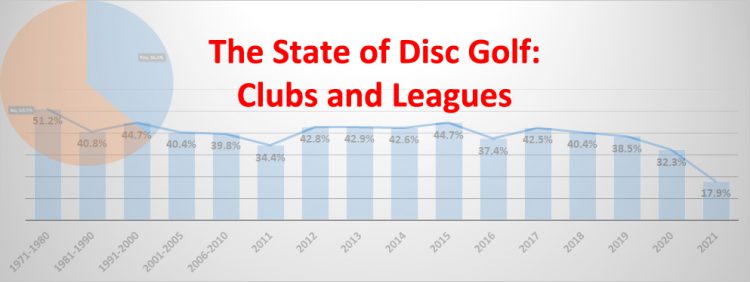
Our local club, Cache Valley Disc Golf, began about 10 years ago. Currently, to ‘join’ the club, all you really need to do is just come out to play at league. We do offer a bag tag for $15, which is completely optional, and that tag allows you to compete for various CTP prizes that are reserved for tag holders. Don’t want to buy a tag? No problem, you can still compete at league.
The cost to play in league is $5, if you want to play competitively. You pay and choose division you want to compete in. Don’t want to play competitively? No problem, we offer a free Recreational division. In other words, if you either can’t or don’t want to pay to play, you can still join us for some disc golf.
We also offer two ace pots: a $1 ace pot and a $5 ace pot. The $5 one obviously grows much faster, often times making for a sweet payout for an ace. There are two optional CTP’s that cost $1 each, one for the cash in the ace pot, and one for a gift card. The total cost for the weekly single league if you pay for every option is $13.
In addition to our weekly singles league, we have a weekly doubles league. The total cost for everything is in doubles is $10. Recently, one of our club members started a flex league. That costs $6 to play if you want to compete for cash and buy in to the ace pot.
Total weekly cost if you want to play in all of our leagues and choose all of the optional buy-ins: $29.
Clubs
Which brings us to this week’s State of Disc Golf Survey subject: Clubs and leagues. In the survey, we asked how many of you belong to a Club, and all of the costs associated with joining and playing in your club events. Let’s check out the data.
The first thing we’ll look at is how many of us belong to a club. Many of us have played in clubs for years and can’t imagine not having that camaraderie and competition in our sport. Others of us are fine playing with the friends and family that we always play with. Many of us play alone, competing against ourselves, or just playing for fun.
The question we asked was, “Did you belong to a local disc golf club in 2021?” Here are your responses:
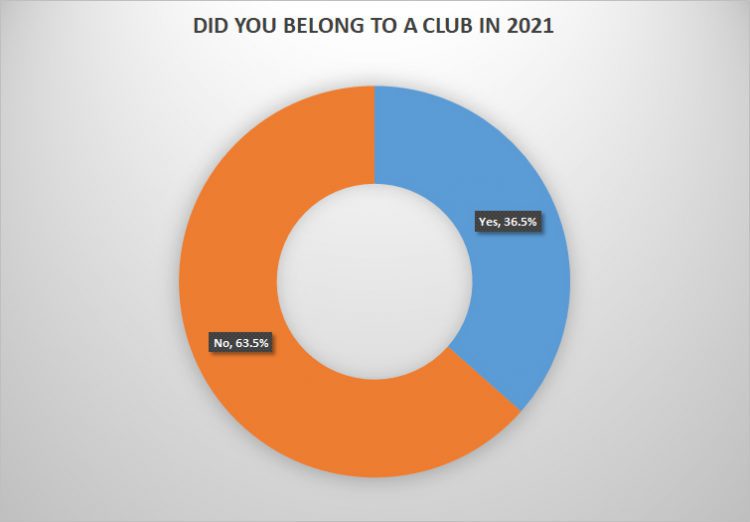
Since nearly two-thirds of us indicated that we belonged to a club last year, the next thing we wanted to look at was the cost to join the club. Many people gave a range, so we took the highest amount in the range for comparison. For those respondents outside the U.S., I did my best so convert the cost to USD. Here are the costs to join for those who indicated that they belonged to a club last year:
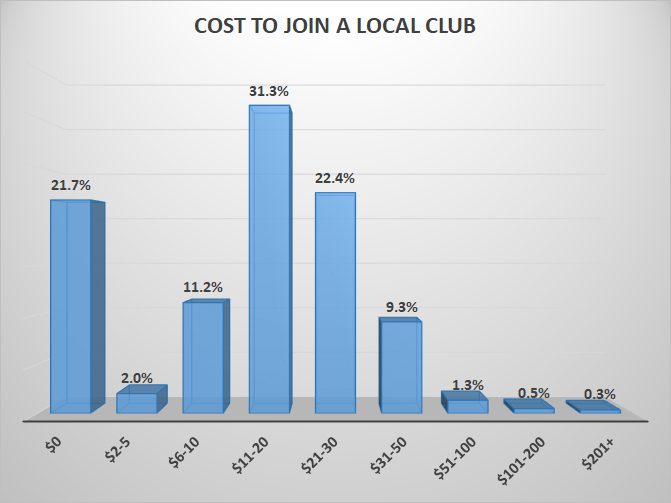
Some people indicated that they got some swag like a disc or clothing when they joined the club, and those costs were a bit higher than the rest. Other people indicated that they could (or have in the past) buy a lifetime membership. Naturally, those would cost more than a yearly fee. The average cost to join a club is around $15, which is right where our club is at.
Leagues
The next cost we wanted to look at was the price to play in weekly events run by the club. Here is what we found:

A large majority of clubs charge very little for weekly events, $10 or less. A few charge $50+ dollars per week. I would guess those are larger clubs with a lot activities to choose from. Next year it would be interesting to have people indicate approximately how many people are in their club.
Our club came in at the highest 10% for weekly costs. Since those costs are mostly optional, it doesn’t have to cost much to play. (Our doubles league has a mandatory buy-in of $5.) Where does your club fall on the chart?
Our Skill Level
Now that we have the numbers for club membership, we can check out the varying demographics to see how many are in clubs. We’ll start with skill levels. The chart below was taken from a previous blog. It shows the percentage of us in each skill level.

We can now look at the percentage of each skill level that belongs to a club.
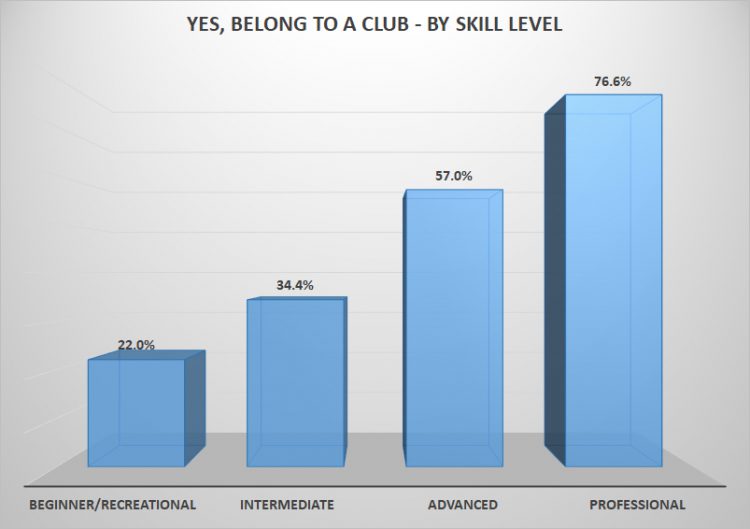
Based on the numbers, we could conclude that belonging to a club improves one’s skill level. However, I think it is more likely that as we improve in disc golf, we are more likely to feel comfortable playing around other people and testing our abilities.
When Did We Start Playing
I thought it would be interesting to look at when we started playing and see if that affects our club membership. The people who started the most recently are less likely to belong to a club, for a variety of reasons, but what about people who started 20 years ago? Or 30 years ago? Here is the chart:

The numbers bounce around a bit, but don’t really vary a whole lot. The percentages dwindle towards the end of the chart, which was pretty much expected. Earlier we mentioned that 37% of us belong to a club. Other than the first and last year(s), there isn’t much difference from average.
Gender
The last demographic we’ll look at is gender. Since 96% indicated that we are male, we already know that the male segment of our survey will be very close to the average number of people who belong to a club. Our average as a group is 36.5% The male average is 36.3%. For those who indicated that they are female, 43.4% belong to a club. For those who did not indicate a gender, 34.5% belong to a club.
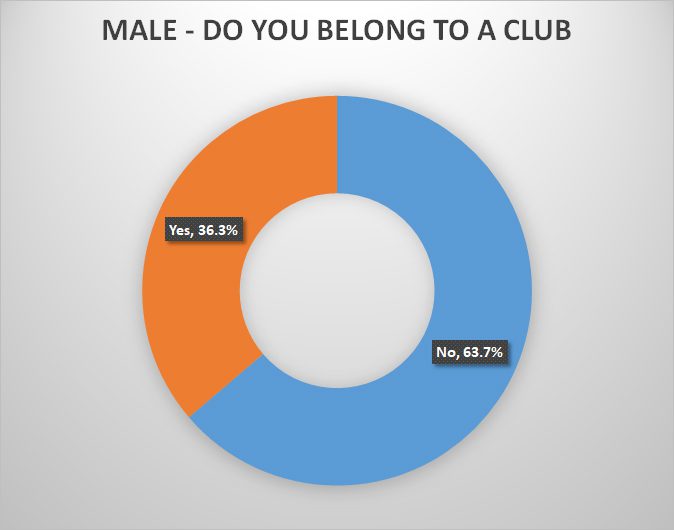
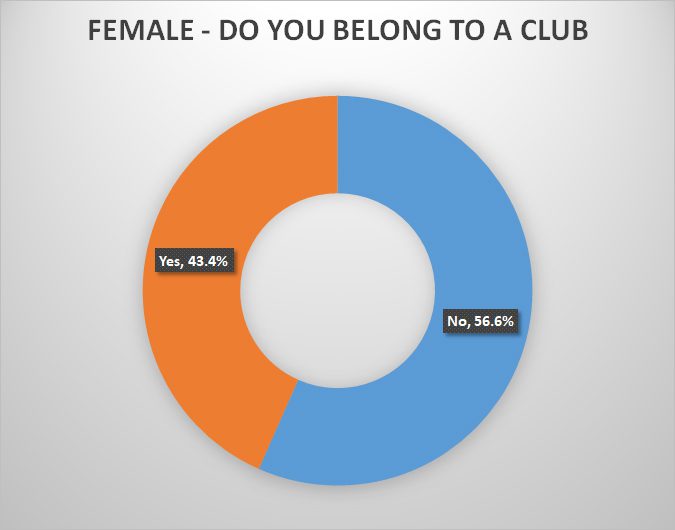

Past Years
Finally, let’s look at an earlier State of Disc Golf survey and see if there have been any changes to the percentage of us who belong to a club. Here are the results for the 2015 survey for the question, “Do you belong to a club?”

That is a significant difference in club membership from 2015 to this year. Based on the chart above that indicates the year we started playing, we can’t really blame the drop in club attendance on the pandemic and the people who started playing in the past couple of years. We might be able to blame the pandemic for people not wanting to play in a club because of social distancing fears, despite disc golf being a non-contact, outdoor sport. Perhaps in the next few years we’ll see an increase in the number of people joining clubs, which would be evidence of the effects of Covid.
Let us know in the comments about your club and leagues. Is your experience in line with the majority? Or are you an outlier?
Tune in next week when we’ll look at more survey results.
